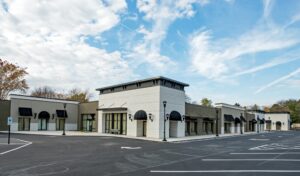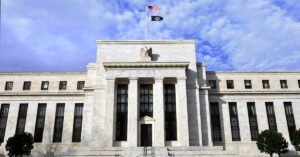It has been a tough time for commercial mortgage brokers. Nearly overnight, the impact of COVID-19 has tightened credit availability for business-purpose loans. Early this past May, the market was still largely on pause.
“You kind of go with the flow but, you know, it certainly is a lot more difficult to get deals done,” says Rob Diodato, president of York Commercial Finance, a broker based in the Dallas area. “If the tenant has a restaurant or a hair salon or even a spa, lenders are just saying, ‘No, thanks, see us in six months.’”
Many lenders stopped funding deals altogether through April 2020, Diodato says. Those that were still in business were hedging their risks, dropping their maximum loan-to-value (LTV) ratios to 50%, down from the more typical 75% LTV seen prior to the coronavirus outbreak, he notes. Nearly all lenders were requiring borrowers to hold more cash in reserve to ensure the loan payments would be made for a year or longer.
The virus also was creating scheduling and logistical problems, Diodato says. Throughout this past April, he found it nearly impossible to get a meeting with a banker. Loan officers at banks were typically tied up with small businesses seeking government stimulus money. Logistically, COVID-19 also made it much harder to clear underwriting hurdles. For example, Diodato says, it was taking much longer to get an appraisal and long delays were putting deals with commitments at risk.
You kind of go with the flow but, you know, it certainly is a lot more difficult to get deals done.
“It becomes a Murphy’s law,” Diodato says. “Anything can happen and lenders can change their minds if things start deteriorating. You could be moving toward a commitment and the lender could just say, ‘You know what, we’re not lending on that.’”
Prior to the coronavirus outbreak in March 2020, this year was expected to be another solid one for commercial real estate transactions. The Mortgage Bankers Association (MBA) projected an increase in commercial and multifamily loan volume over the 2019 level of $600 billion closed across the overall market that it tracks. Early estimates indicate that commercial mortgage originations will decline in 2020. In the first quarter of this year, originations declined 2% year over year, MBA reported, although that number includes data for only one month of the crisis.
As of this past May, the trade group had not yet revised its 2020 projections, says Jamie Woodwell, MBA’s vice president of commercial real estate research. One problem in evaluating the market, he says, is that traditional benchmarks are unstable. For example, commercial-property vacancies tend to move in tandem with the unemployment rate. Yet it wasn’t clear this past May what the true unemployment rate was, given that a large number of laid-off workers would likely return to their jobs once states loosen stay-at-home orders and reopen their economies. Nobody could predict how many people would return to work when states reopen nor when that would occur, Woodwell says.
The coronavirus outbreak also is an unprecedented event. It dealt an immediate blow to every commercial real asset class in virtually all U.S. markets. Therefore, mortgage forecasters couldn’t compare this crisis to other downturns in which only portions of the market were disrupted.
“The outlook now is pretty significantly different from what it was [before the crisis],” Woodwell says. “Lenders are looking both at the long-term prospects of the property and its ability to get through this period of economic uncertainty.”
As the pandemic gained momentum this past April, experts were discussing the recovery in terms of years, not months. During a webinar, CBRE global chief economist Richard Barkham noted that occupancy rates and rents in the multifamily, industrial and office sectors will likely rebound to pre-coronavirus levels in one to two years, whereas it might take the retail sector three years to recover. The overall size of the traditional retail-property sector, however, may never fully regain its market share, Barkham says, given that consumers became even more conditioned to shop online during the lockdown.
In the short term, lenders have been willing to refinance loans with existing borrowers but are reluctant to do new loans, Woodwell says. Mortgages for multifamily, office and industrial properties have the best chance of getting funded, while retail and hotel loans are expected to be extremely difficult to obtain for some time, he says.
As states begin to relax social-distancing requirements, however, more lenders are willing to evaluate deals again, says Marsha Goff, an executive vice president at Merchants Capital based in Saint Paul, Minnesota.
“Obviously, COVID has hit fairly hard with the unemployment claims,” Goff says. “But, you know, we’re starting the recovery period with industries just starting to open.
“The real question is, how long is that recovery going to be?” she says. “Will it be a slower recovery, what they call the ‘Nike swoosh,’ versus the V-shaped recovery? The optimism definitely has picked up.” •
Author
-

Victor Whitman is a contributing writer for Scotsman Guide and a former editor of the publication’s commercial magazine.
View all posts





